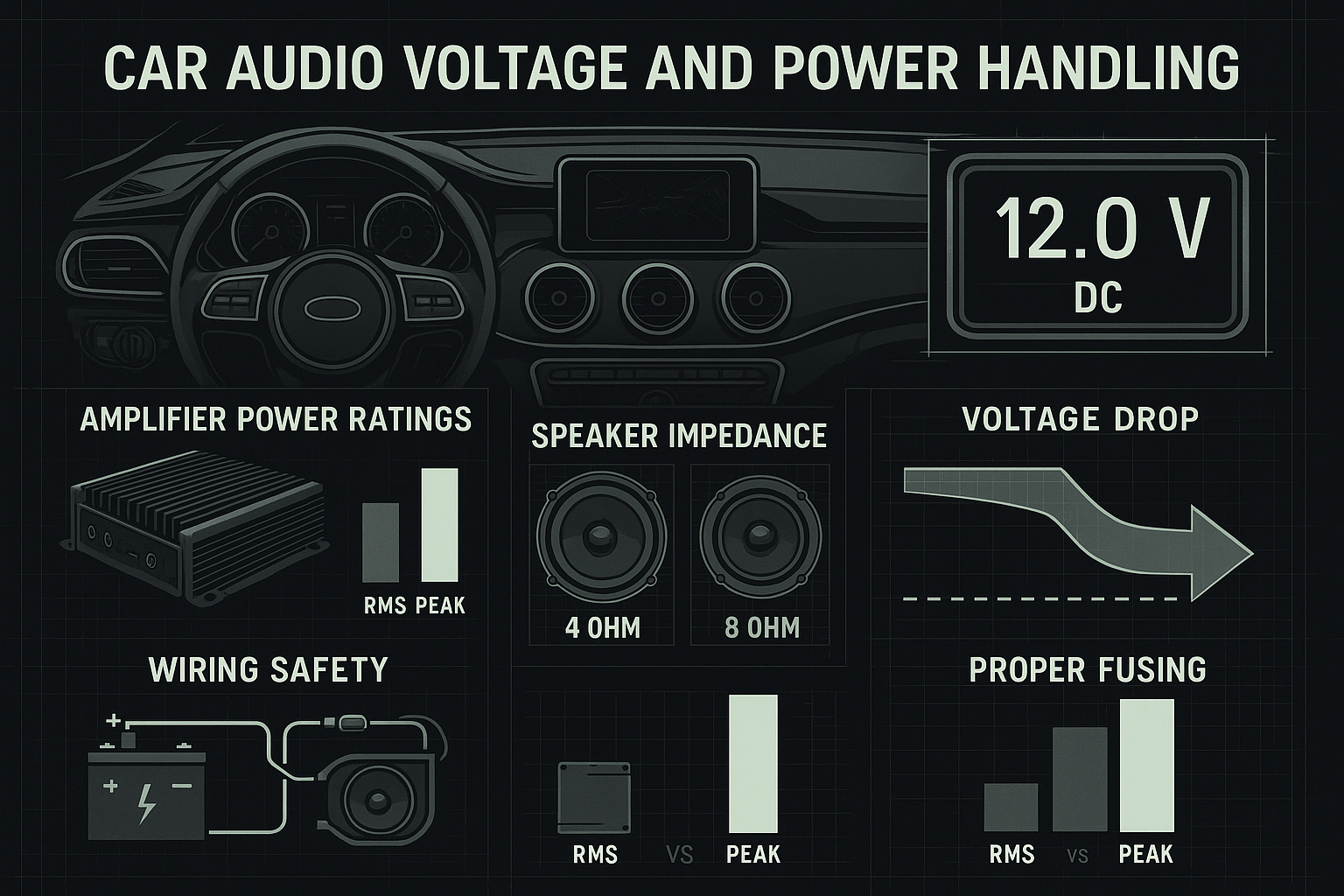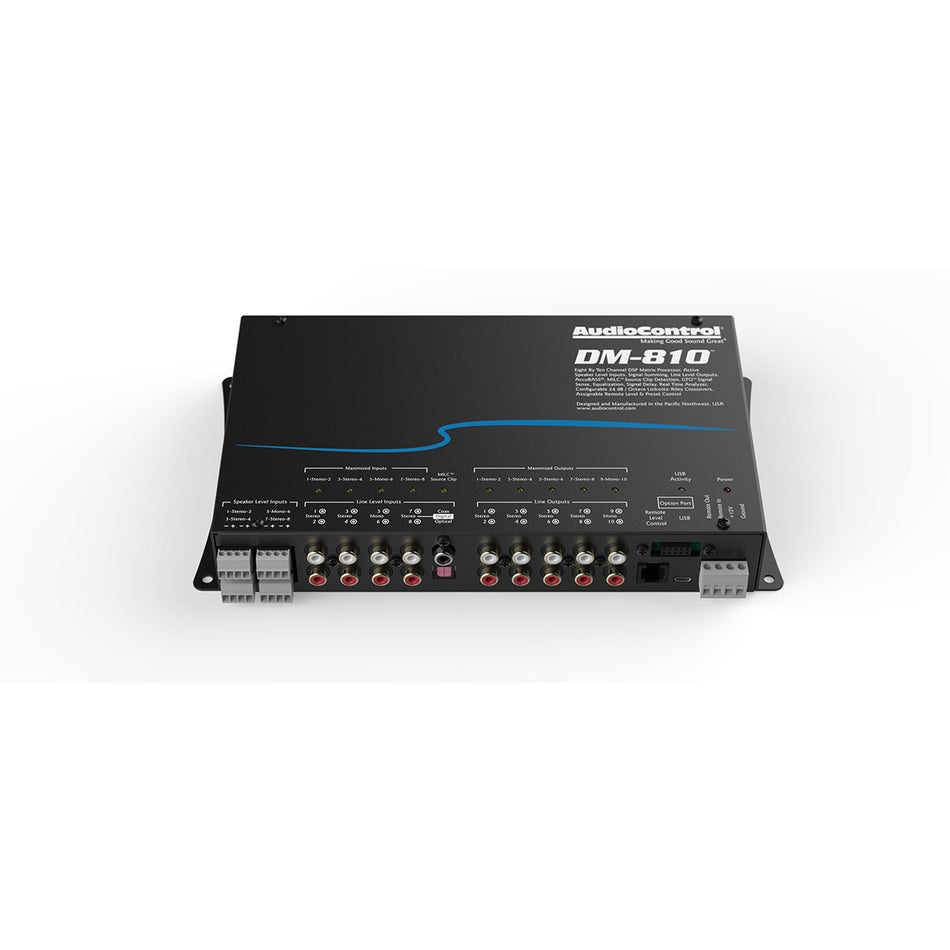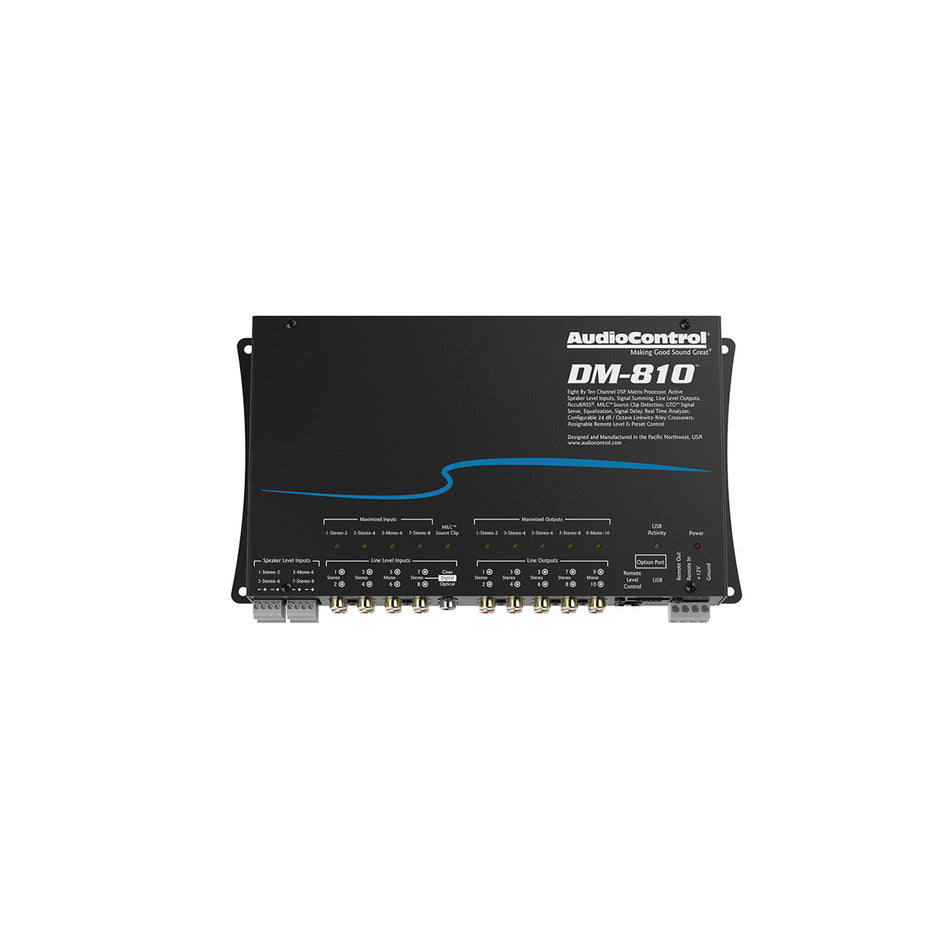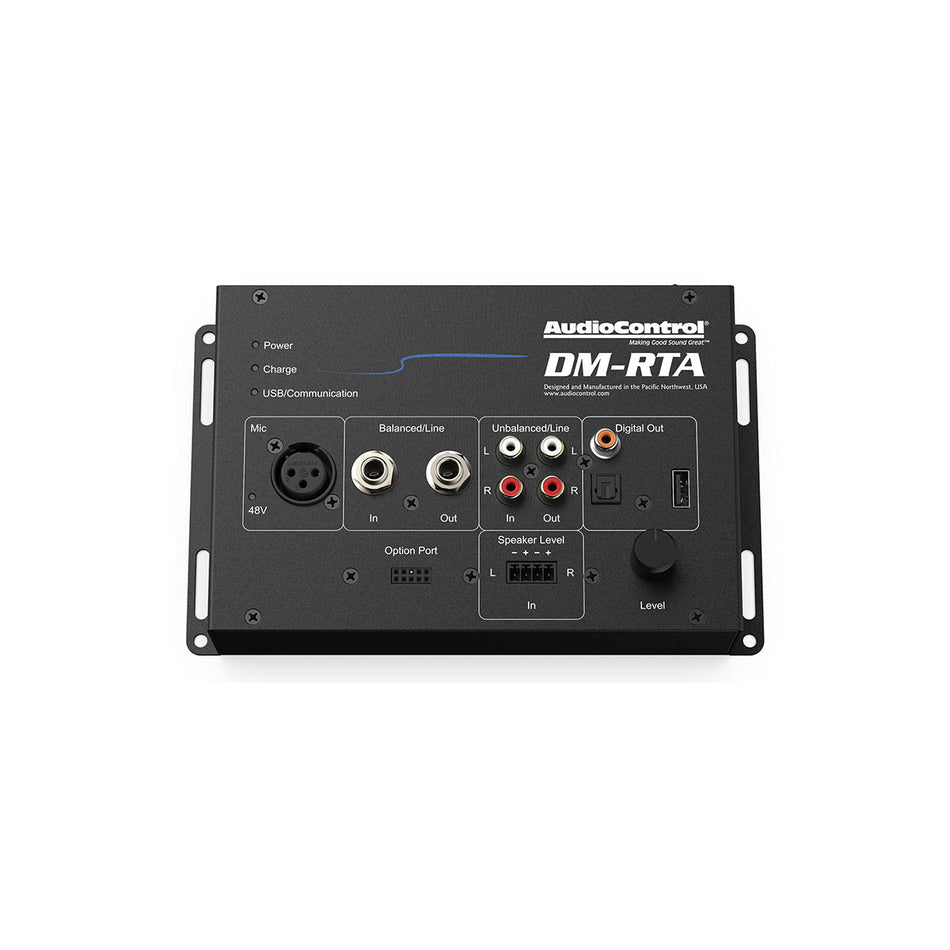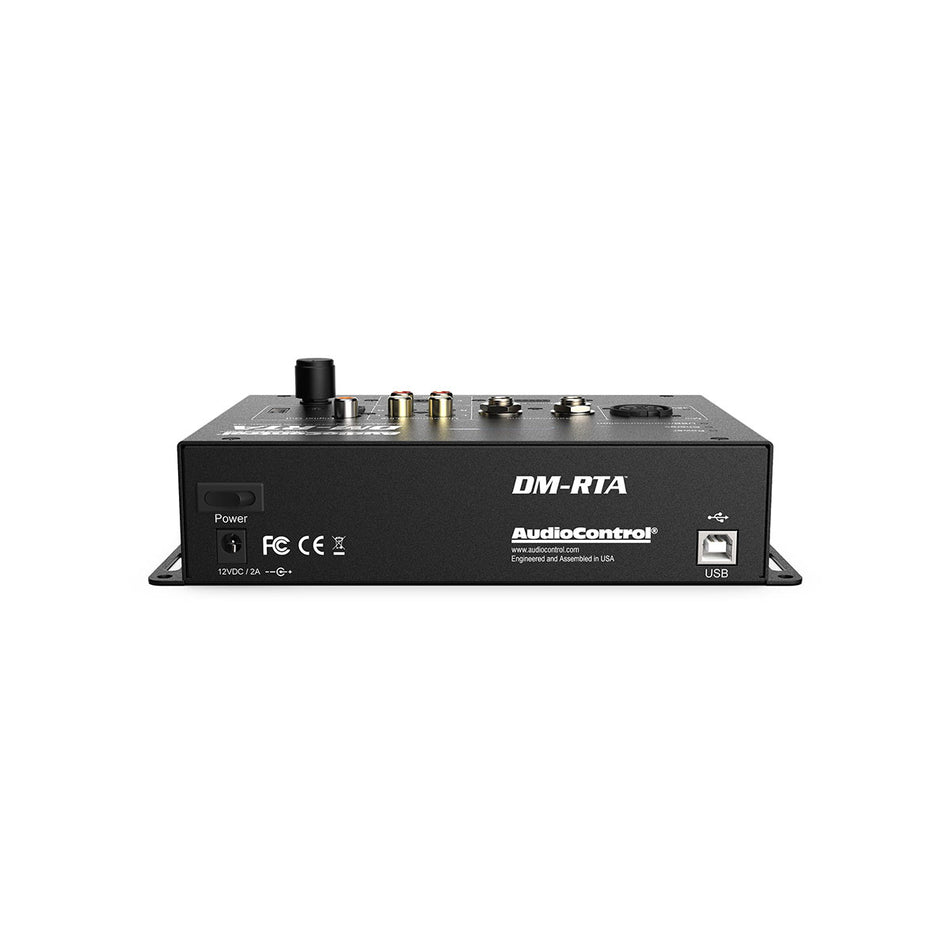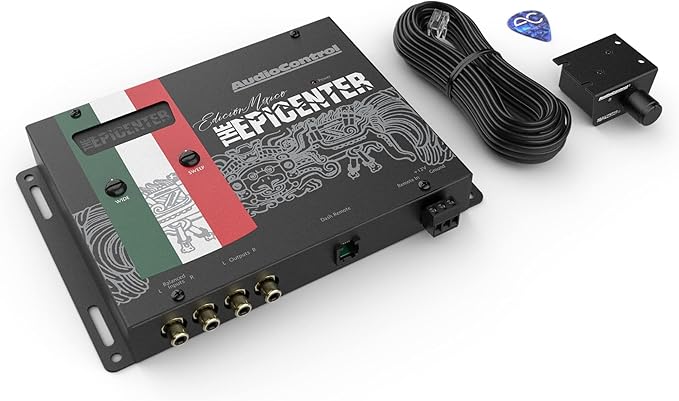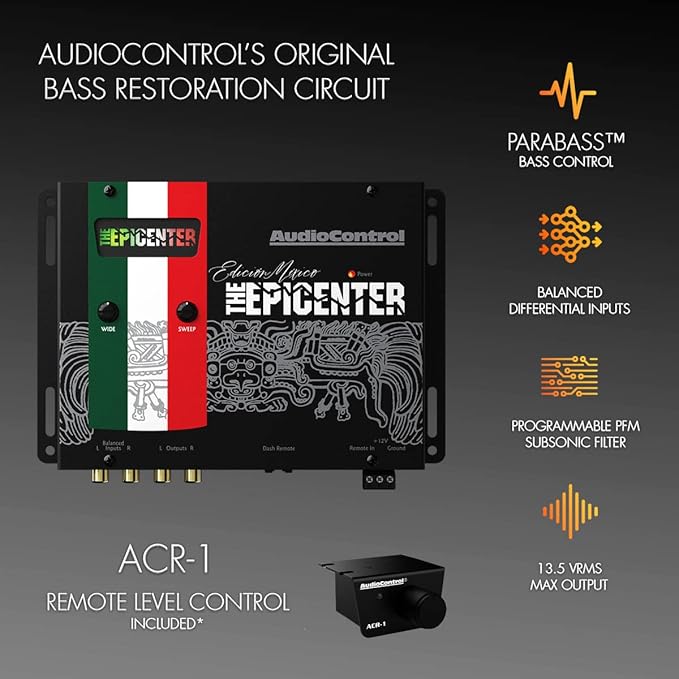Car audio can be confusing when technical terms like voltage and power handling start showing up in product descriptions. These are not just numbers on a box, they are what makes your system perform as well as possible, last as long as possible and even whether you really get the sound quality you expected. Some of the basics that can prevent blown speakers, poor bass or distorted highs.
Why Voltage Matters in Car Audio
Voltage is the basis of your audio system electrical flow. Most cars have systems based on a 12-volt power supply, but amplifiers and many higher-performance equipment need stable and consistent voltages to operate to their best potential.
When the voltage dips below the level your gear needs, you’ll notice symptoms like:
-
Lights dimming when the Bass hits
-
Clipping or distortion in the speakers
-
Amplifiers shutting down under heavy loads
Stable voltage isn’t just about sound quality — it’s about protecting your investment in amplifiers, subwoofers, and speakers.
Power Handling Explained
Every speaker has a power rating that indicates how much energy it can handle safely. This is known as power handling and is usually listed in watts. There are two key measurements:
|
Term |
What It Means |
Why It Matters |
|---|---|---|
|
RMS Power |
Continuous power a speaker can handle |
Tells you real-world durability |
|
Peak Power |
Maximum short burst a speaker can handle |
Good for marketing, less useful in practice |
Safest way to make sure that your amp and speakers can deliver clean and powerful sound, without straining the limits, is to match the output of the amp with the RMS rating of your speakers.
Relationship Between Voltage and Power
Consider voltage as the push, so that power (push x pull) flows through your system. Equally stable voltage can enable amplifiers to supply wattage at a constant rate to your speakers when the supply is stable. However, when the voltage drops your system will be tempted to take more current which can overload both the amp and the speakers.
That is why car audio voltage explained goes hand-in-hand with power handling car speakers learning how to balance performance with safety.
Common Mistakes Beginners Make
-
Overpowering small speakers – Running a 1000-watt amp into speakers designed for 200 watts RMS.
-
Ignoring RMS ratings – Relying only on peak numbers that don’t reflect real-world use.
-
Skipping voltage checks – Not using a multimeter or voltmeter to monitor the health of the system.
-
Mismatched gear – Choosing an amplifier without considering the speaker’s load capacity.
Tips for Getting It Right
-
Use a quality voltmeter to make sure your system isn’t dipping below 12 volts when playing music loud.
-
Match the amplifier’s RMS output per channel with your speaker’s RMS rating.
-
Pay attention to impedance (ohms), since lower impedance loads demand more power from the amp.
-
Consider adding a capacitor or upgraded alternator if your system requires more electrical support.
Bringing It All Together
Knowledge of voltage and power capacity is like knowing how to read the road before you drive, it prevents costly mistakes and makes the ride smoother. Getting a proper balance makes your speakers sound good without distortion and your amplifier is not being fired up beyond needs be.
Focused compatibility will help you get the maximum benefit out of the input devices and circuitry that your system was built to deliver, be it great casual listening or serious use at competitive levels.

